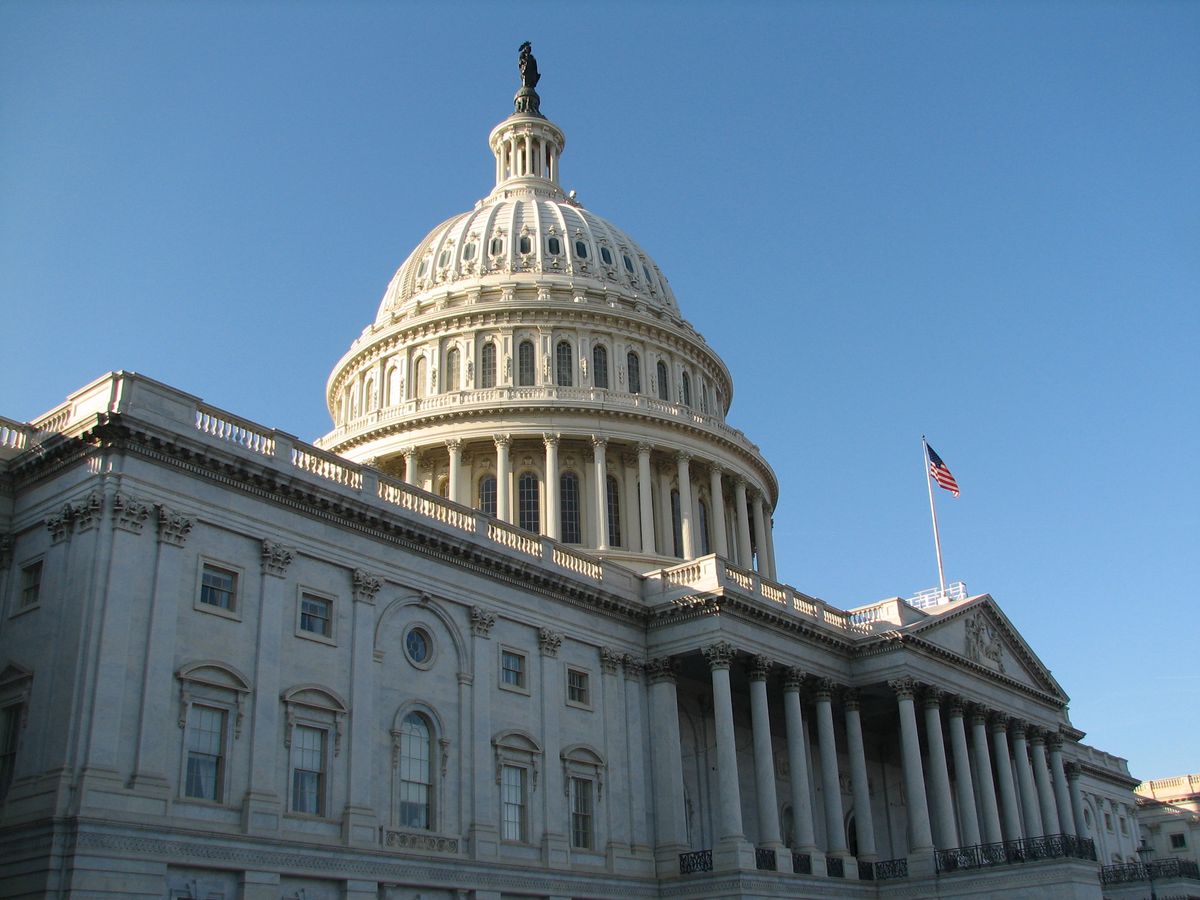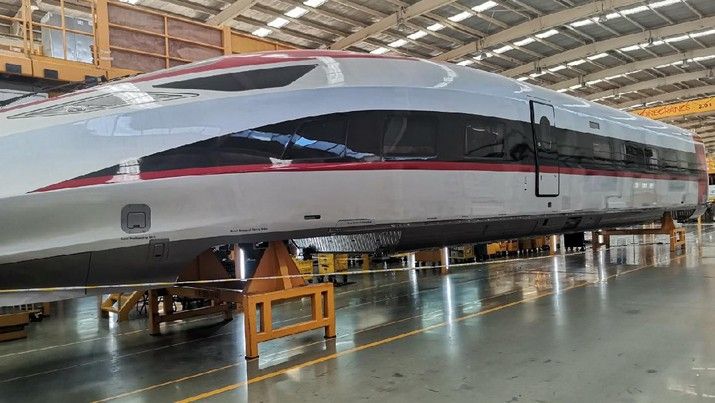US Geopolitical Leadership at Risk without R&D Investment, Experts Warn

The United States geopolitical leadership “will be at increasing risk” without investments in research and development and a steady workforce to compete with China, experts told the House Committee on Science Space and Technology on Tuesday, Feb. 28.
The Committee held a hearing: The United States, China, and the Fight for Global Leadership: Building a U.S. National Science and Technology Strategy, assessing the state of America's science and technology enterprise along with economic and national security implications of the Chinese Communist Party’s (CCP) efforts to surpass the United States.
Main takeaways:
· The U.S. shares of global research and development (R&D), dropped from 69 percent in 1960 to 31 percent in 2020.
· China's global R&D performance has significantly increased over the years, with the country now being the second-largest performer, representing 24.8 percent of global R&D in 2020 compared to only 4.9 percent in 2000.
· CCP employs technological theft and aggression, leveraging its innovation industry as a means of espionage, to gain an advantage in the global technology race.
· To keep up with China, the U.S. should invest more in R&D, prioritize human capital, elevate the use of technology statecraft, fund national labs, foster state-private partnerships, and “lead with values,” experts said.
The House Committee on Science, Space, and Technology, which has jurisdiction over most federal research and development that is not related to defense or human health, held a discussion as an informative measure for the development of the National Science and Technology Strategy.
Experts who testified in front of the Committee agreed that inaction and lack of response to CCP’s efforts will have economic and national security implications for the U.S. and endanger its current position on the world stage.
"If the United States does not mount a strong all-of-nation response to these opportunities and new competitive realities at home and from overseas, if we fail to make needed investments in our people and future, our nation’s fundamental capacity to grow its economy, create jobs, maintain national security, solve societal challenges, and provide a social safety net will continue to erode, and our geopolitical leadership will be at increasing risk," said Deborah Wince-Smith, President and CEO of the Council on Competitiveness.
Even though the U.S. has been spending billions on research and development, its global share has dropped from 69 percent in 1960 to 31 percent in 2020.
Meanwhile, China which considers science and technology as “a strategic support for national development”, has become the second-largest R&D performer, accounting for 24.8 percent of global shares, compared to 4.9 percent in 2000.
China's investment in technology development, including the Made in China 2025 Plan and the Thousand Talents program, has allowed it to surpass the United States. These policies have been backed by significant funding, with hundreds of billions of dollars invested to cultivate technological innovation, experts said.
In 2015, China announced the "Made in China 2025" initiative, aimed at transforming the country from a manufacturing powerhouse to a global leader in science and technology by 2049 - the 100th anniversary of the People's Republic of China. The initiative which targets many sectors, from advanced IT to battery technology, also supports China to become one of the most innovative countries by 2020 and a top innovator by 2030.
In addition to these programs, experts said CCP also utilizes its innovation industry for espionage, engaging in technological aggression and theft.
These efforts include building research centers in U.S. innovation hubs, forced joint ventures for market access, forming partnerships with U.S. research universities, sending students to the United States for academic studies, cyber theft, and industrial espionage. While enterprise-based technology centers, state laboratories, engineering research centers, national technology transfer centers, and other entities serve to absorb foreign technologies, Wince-Smith said.
She added that China's programs to recruit talented individuals also raise concerns. The United States government agencies have uncovered cases of individuals in these programs who downloaded sensitive electronic research documents before departing for China, as well as deliberately withheld the fact that they received funding from the Chinese government on their federal grant applications.
Klon Kitchen, Senior Fellow at American Enterprise Institute said cybersecurity and national security laws allow CCP to mandate all companies and gather data on individuals, including on U.S. citizens, referring to companies like TikTok and WeChat.
Chairman Frank Lucas thinks China’s technological dominance will decrease the chance for U.S. firms to participate in the global market and increase their vulnerability to sensitive national security instruments. In the long run, he said it would lead to less privacy, transparency, access, and fairness in AI, quantum information sciences, cybersecurity tools, and other sectors of the industry.
To tackle CCP’s efforts, the U.S. has already passed Securing the American Science and Technology Act, National Security Presidential Memorandum-33, and CHIPS and Science Act.
But experts said the U.S. needs a successful National Science and Technology Strategy (NSTS), with priorities on human capital, workforce development, more funding, and public-private partnerships.
“Every sector should “see itself” in the plan, and organizations within each sector should be able to use the plan to help chart their course for the future in a manner that supports national goals but is not dictated by them,” said Dr. Kelvin Droegemeier, Former Director at the White House Office of Science and Technology Policy.
Wince-Smith said the U.S. must broaden its innovation ecosystem, get out of major metropolitan areas and engage a diverse workforce that would drive growth and innovation.
It includes national laboratories that are leading the country’s innovation efforts, added Dr. Kim Budil, Director at Lawrence Livermore National Laboratory. She said they have the ability to tackle significant scientific challenges, with state-of-the-art equipment and facilities and highly-skilled staff.
“Federal investments in national labs—to support top-notch staff and outstanding scientific capabilities—have provided the foundation of U.S. science and technology (S&T) leadership since the end of World War II. Continuing these investments is crucial for future U.S. S&T leadership,” she said.
By integrating science, technology, and innovation into its core diplomatic and foreign service capability the U.S. can elevate the use of technology statecraft, taking a step forward to maintaining geopolitical leadership, Wince-Smith added.
“If we do not counterbalance the Chinese Communist Party’s aggressive ambitions and moves in reforming the global governance system, we will be challenged to constrain its authoritarian, anti-competitive, and illicit practices — and the competitiveness and economic security of many nations, including our own, will be under threat,” she said.
All experts that testified at the House Committee on Science Space and Technology hearing on Tuesday agreed that the U.S. needs to ramp up its efforts if it wants to maintain leadership in the field.
“It has been said that research and innovation anywhere are good for research and innovation everywhere and that a rising tide lifts all boats. Both are true,” Dr. Droegemeier concluded in his testimony. “However, the U.S. cannot rely on the global rising tide of S&T research and innovation to lift its boat. It must develop a bold, transformative S&T Strategy that allows it to sail higher, move more quickly, unleash the creative talents of every individual, collaborate intentionally, and lead globally with its values. The CHIPS Act provides an opportunity to do just that.”



